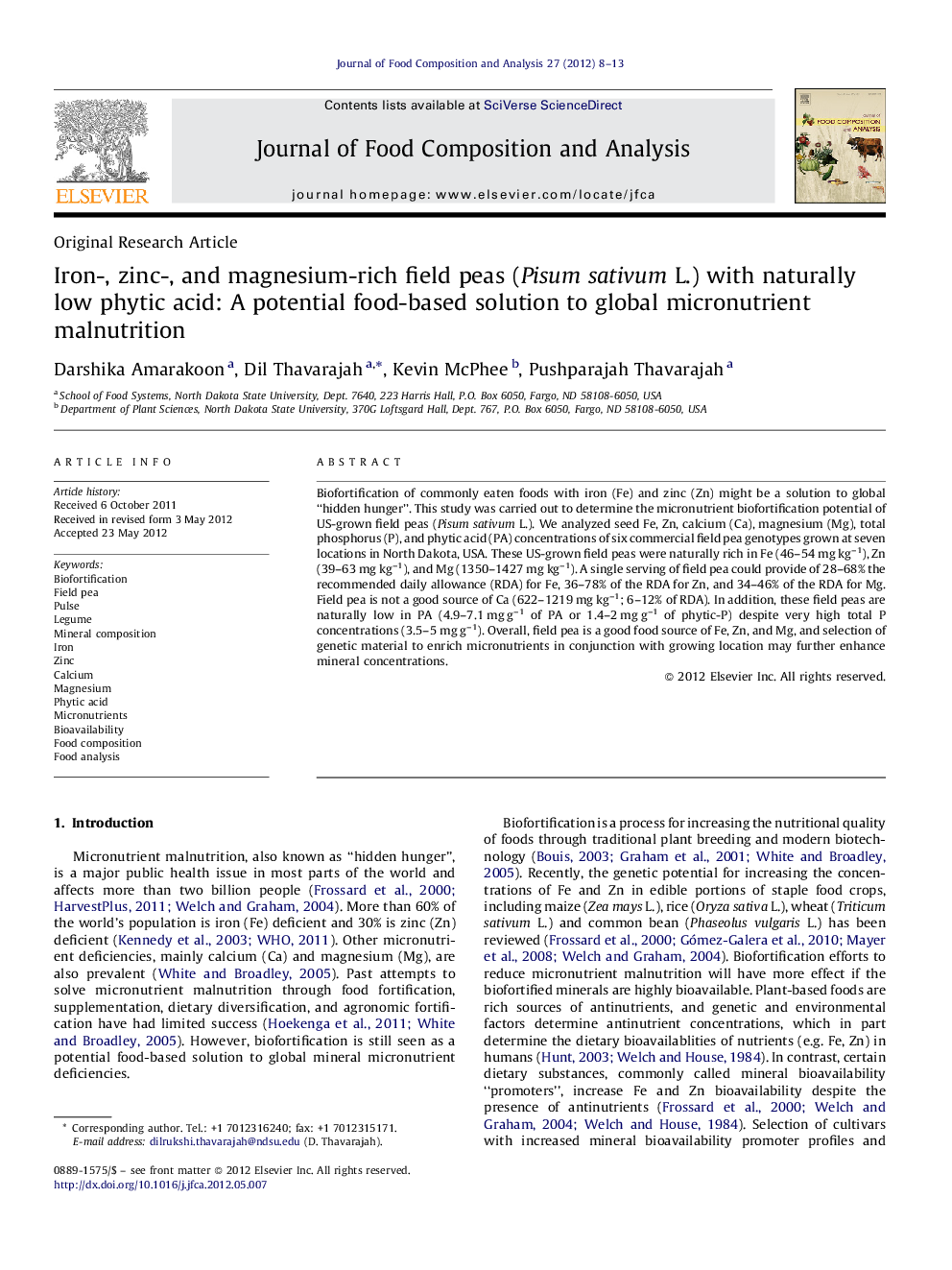| Article ID | Journal | Published Year | Pages | File Type |
|---|---|---|---|---|
| 10552772 | Journal of Food Composition and Analysis | 2012 | 6 Pages |
Abstract
Biofortification of commonly eaten foods with iron (Fe) and zinc (Zn) might be a solution to global “hidden hunger”. This study was carried out to determine the micronutrient biofortification potential of US-grown field peas (Pisum sativum L.). We analyzed seed Fe, Zn, calcium (Ca), magnesium (Mg), total phosphorus (P), and phytic acid (PA) concentrations of six commercial field pea genotypes grown at seven locations in North Dakota, USA. These US-grown field peas were naturally rich in Fe (46-54 mg kg-1), Zn (39-63 mg kg-1), and Mg (1350-1427 mg kg-1). A single serving of field pea could provide of 28-68% the recommended daily allowance (RDA) for Fe, 36-78% of the RDA for Zn, and 34-46% of the RDA for Mg. Field pea is not a good source of Ca (622-1219 mg kg-1; 6-12% of RDA). In addition, these field peas are naturally low in PA (4.9-7.1 mg g-1 of PA or 1.4-2 mg g-1 of phytic-P) despite very high total P concentrations (3.5-5 mg g-1). Overall, field pea is a good food source of Fe, Zn, and Mg, and selection of genetic material to enrich micronutrients in conjunction with growing location may further enhance mineral concentrations.
Keywords
Related Topics
Physical Sciences and Engineering
Chemistry
Analytical Chemistry
Authors
Darshika Amarakoon, Dil Thavarajah, Kevin McPhee, Pushparajah Thavarajah,
